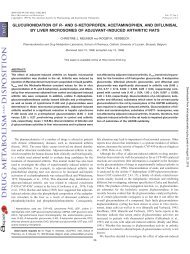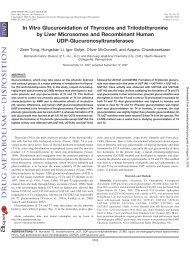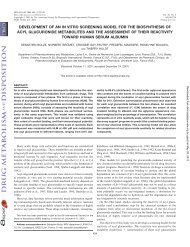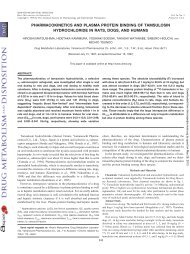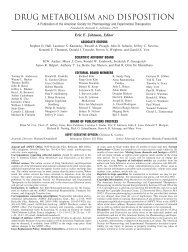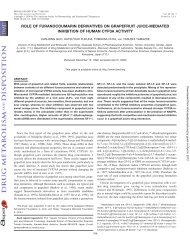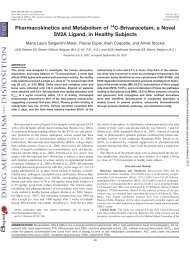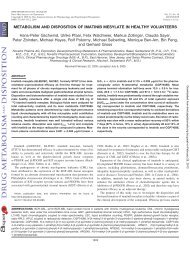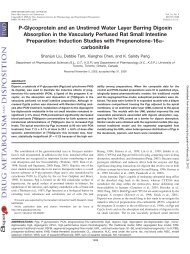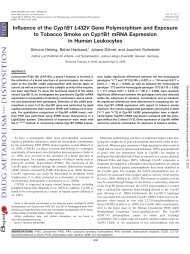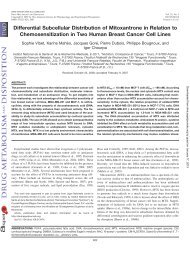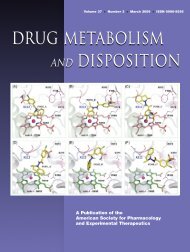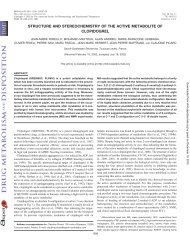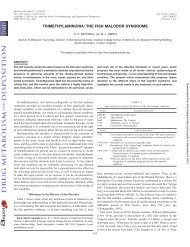DMD #048264 1 Discovery and Characterization of Novel, Potent ...
DMD #048264 1 Discovery and Characterization of Novel, Potent ...
DMD #048264 1 Discovery and Characterization of Novel, Potent ...
Create successful ePaper yourself
Turn your PDF publications into a flip-book with our unique Google optimized e-Paper software.
<strong>DMD</strong> <strong>#048264</strong><br />
= ΔEelec + ΔEvdW + ΔGGB + ΔGnonpolar – TΔS<br />
where ΔEelec is the electrostatic contribution to the binding free energy <strong>and</strong> ΔEvdW is the<br />
van der Waals interaction contribution. Both electrostatic <strong>and</strong> van der Waals interaction<br />
energies were calculated using the SANDER module from the AMBER11 package. We<br />
applied the modified generalized Born (GB) model developed by Onufriev <strong>and</strong><br />
colleagues (Onufriev et al., 2000) (referred as GB OBC ) to calculate the electrostatic <strong>and</strong><br />
van der Waals interaction energies without any cut<strong>of</strong>f. ΔGGB <strong>and</strong> ΔGnonpolar represent the<br />
electrostatic <strong>and</strong> nonpolar contributions to the solvation free energy, respectively. The<br />
GB method in AMBER11 was used to compute the electrostatic part, ΔGGB, where the<br />
exterior dielectric constant was 80 <strong>and</strong> the interior dielectric constant was 1. The ionic<br />
strength for the GB solvent is 0, so the electrostatic screening effects <strong>of</strong> salt is not<br />
considered here. The Bondi radii (Bondi, 1964) were used for all atoms. It is noteworthy<br />
that we set the F atom radius to 1.47 Å (Batsanov, 2001), which is not included in the<br />
st<strong>and</strong>ard AMBER11 package. The nonpolar contribution (ΔGnonpolar) is calculated using<br />
the LCPO method (Weiser et al., 1999) <strong>and</strong> can be expressed as:<br />
ΔGnonpolar = SURFTEN × SASA + SURFOFF<br />
The SASA is the solvent-accessible surface area obtained from the MOLSURF program<br />
(Connolly, 1983) <strong>and</strong> the SURFTEN <strong>and</strong> SURFOFF parameters were 0.0072 <strong>and</strong> 0,<br />
respectively. The radius <strong>of</strong> probe sphere was set 1.4 Å. The entropic contribution (TΔS)<br />
to the binding free energy was not considered in our calculation.<br />
Results<br />
15



